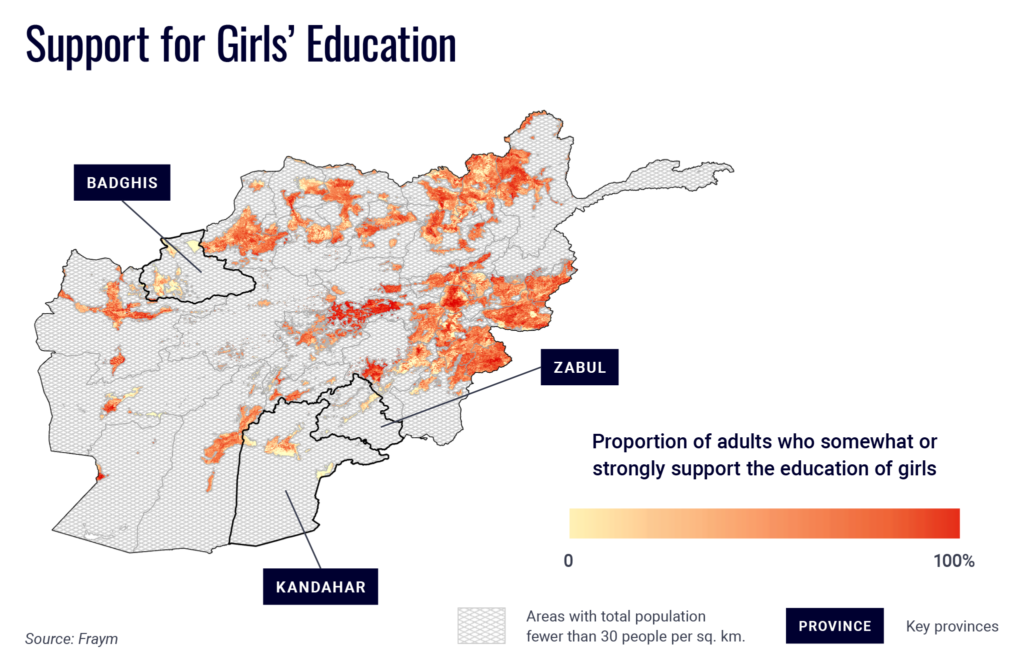Build Effective Social and Behavior Change Strategies

Dramatic images have emerged from Afghanistan in the past few days as the United States prepares to bring the 20-year-long war there to a close. Such images provoke many questions about how Afghans may react to Taliban rule, such as:
Fraym’s machine-learning generated data can answer these questions and more at the hyper-local level.
(1) How popular is the Taliban across Afghanistan?
Support for the Taliban is generally low across the country, with only 12 percent of adults saying they would prefer Taliban rule over rule by the democratic government of Afghanistan. However, support varies at the regional level, with the South Central region having the highest rates of support at 19 percent. Yet within the South Central region, some districts have support levels around 50 percent including Andar, Sharan, and Mata Khan.
(2) Who is likely to flee the country?
A large percentage of Afghan adults report a willingness to leave the country, with 47 percent deeming it very or somewhat likely they or a family member would leave the country in the next 6 months. Kabul province ranks low relative to the country average, with only 38 percent of adults reporting they or their family might leave. The five provinces with the highest rates are not far from Kabul however. To the northeast there is Panjsher, Nuristan, and Badakshan, and to the west there is Maydan Wardak and Bamyan—all of which have rates around 60 percent.

(3) What are local attitudes toward women’s rights?
Support for girls’ education is very high across Afghanistan, with an average of 86 percent of adults somewhat or strongly supporting it. This is in sharp contrast to the Taliban, who forbade the education of women and girls when they ruled the country pre-2001. Provinces with lower levels (but still supermajorities) of support for girls’ education relative to the national average include Badghis (72 percent), Zabul (73 percent), and Kandahar (73 percent).

Note: The data above is from the 2019 and 2020 Afghan Futures Surveys.